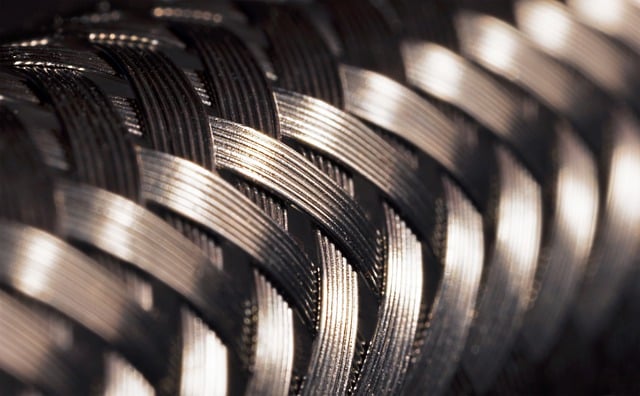A new wave is sweeping through the steel sector, and its name is steel import tariff. Yes, Indian steelmakers are finally seeing some relief as the government plans to impose duties on steel imports.
But the story isn’t that simple—it’s a mix of global trade wars, Trump’s “America First” policy, and India’s own unique twist. Let’s get into the details of the Indian steel sector with facts and figures!
The State of the Steel Sector: The Backstory
India’s steel sector is rock solid—we are the second-largest crude steel producers in the world. In 2024, we produced 142 million tonnes of steel (as per the World Steel Association). This sector forms the backbone of infrastructure, manufacturing, and over 2 million jobs.
Yet, despite its strength, the steel industry wasn’t in the best shape in 2024. That year, India became a net steel importer—meaning we started buying more steel from abroad than we exported. Chinese imports surged by 80%, and between January and July 2024, India imported 1.61 million tonnes of steel.
This influx of cheap steel crushed local players like Tata Steel, JSW Steel, and smaller producers. Prices crashed, margins shrank—it was a period of tension and struggle.
Trump’s Trade War: A 25% Tariff on Steel
In February 2025, with his new term, Donald Trump made a bold move—imposing a 25% tariff on US steel imports and a 10% tariff on aluminum imports, effective from March 4, 2025.
His logic? “Protect American steel, save jobs, and strengthen the economy.” While this was aimed at the American market, it had global repercussions.
China, the world’s largest steel exporter (110 million tonnes in 2024, a nine-year high), suddenly found its biggest market closing its doors. The result? China started dumping its steel into Asia and Europe, with India becoming a prime target.
By 2024, India’s steel imports were under immense pressure, even though domestic demand was strong—111.25 million tonnes, up 11.2% from 2023. Yet, local producers found it increasingly difficult to compete.
Also Read: Why Are Defence Stocks Rising in this Week Market?
India’s Response: A Homegrown Steel Import Tariff
Seeing this situation, India’s steel sector thought,
“If the US can protect its steel with tariffs, why should we lag behind?”
The Ministry of Steel and the Ministry of Commerce discussed the matter, and a proposal emerged—a 12% import duty on steel. This idea may have been inspired by Trump’s playbook. After all, when Trump first imposed steel tariffs in 2018, India responded by imposing duties on 28 US products. The tariff game isn’t new, but this time, the context is different.
The government is currently investigating, and the Directorate General of Trade Remedies (DGTR) is conducting an anti-dumping probe.
If this tariff is imposed, it will put a major check on imported steel—especially from China and South Korea. And if that happens, Indian steel companies could finally get some relief.
Also Read: Weather As Weapon: How China’s Weather Modification Project Tianhe Be a Threat to India?
What Will the Tariff Change? Positivity or New Challenges?
Let’s zoom in and analyze the impact of this tariff—looking at both the positives and the negatives.
Positives:
✅ Boost for Local Players: A 12% duty on imported steel will make domestic producers more competitive. Giants like Tata Steel, JSW Steel, and smaller players will have a chance to recover their margins.
✅ Job Stability: The steel sector directly employs 2 million people and indirectly over 10 million. Increased local production means more employment stability—a big win for the economy.
✅ Trump’s Formula: India may have adopted Trump’s “protect your own” mantra, and in this era of global trade wars, it could be a smart move.
Negatives:
❌ Global Retaliation: If India imposes a tariff, China or the EU may respond by imposing duties on our exports. In 2024, India exported $450 million worth of steel to the US—any pressure from there could spell trouble.
❌ Higher Costs for Consumers: If steel prices rise, it will impact the cost of cars, bridges, and buildings. This could bring some negativity alongside the tariff’s benefits.
❌ Struggles for Smaller Players: While big companies can absorb the impact, smaller steelmakers might still struggle, as Chinese dumping remains a significant threat.
Steel by the Numbers: The Facts and Figures
📌 China’s Steel Dumping: In the first seven months of 2024, India imported 1.61 million tonnes of steel, an 80% jump from 2023.
📌 India’s Consumption: In 2024, India’s finished steel consumption was 111.25 million tonnes—a six-year high, with an 11.2% growth rate.
📌 Production: In 2024, India produced 142 million tonnes of crude steel, ranking second in the world.
📌 Trump’s Impact: A 25% US steel tariff caused global prices to rise by 5-7% in Q1 2025 (as per Bloomberg).
On the Ground: What People Are Saying
A Mumbai steel trader, Rajesh Bhai, said,
“The tariff will benefit us—if local steel is cheaper, profits will rise.”
However, an official from the Indian Steel Association (ISA) expressed concern,
“Dumping is still a worry—despite the tariff, China might continue sending cheap steel.”
A small producer from Punjab commented,
“We are struggling as it is—this tariff gives us some hope, but it’s not a complete solution.”
This tariff is a defensive move.
The government is working on a temporary tax, and ISA is seeking an exemption from the US since India’s steel exports to the US aren’t massive.
Will There Be Positivity in the Steel Sector?
Yes, the steel import tariff could bring positivity to the steel sector—it might boost local producers, create jobs, and add momentum to the economy. But it’s a tightrope walk—global retaliation and rising consumer prices could pose significant challenges.
Trump’s tariff policy might be an inspiration for India, but we need a uniquely Indian formula—one that stops dumping while ensuring long-term growth.


